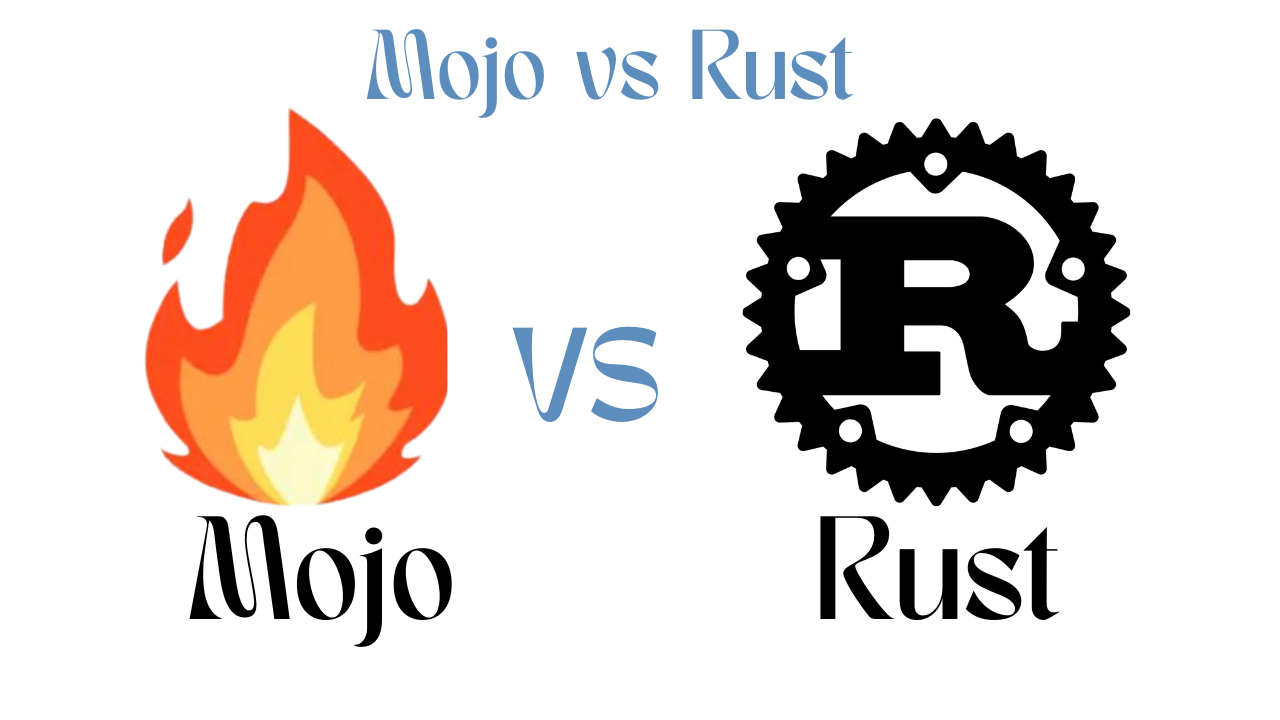Mojo vs Rust: In the programming world, choosing the right language for a particular task like AI development, App development, System development, Web development or more can be as crucial as the design of the software itself. In this article, we will compare two powerful languages Mojo vs Rust. Mojo is easy to use and good for making AI projects, while Rust is focused on making programs run fast and safely. Knowing about these languages can help programmers pick the best one for their projects. Understanding the unique strengths and characteristics of each language can assist developers in making informed decisions when selecting the most suitable tool for their projects.
Mojo vs Rust
In this blog post, we will discuss Mojo vs Rust completely. First, we discuss the Mojo language and then Rust. After that, we will finally conclude the comparison.
Basic Introduction to Mojo Programming Language
Mojo is a programming language that bridges the gap between research and production. It is specially designed for AI development. Mojo first appeared on 2 May 2023 via Jupyter Notebook and locally on 7 September in Linux OS. Mojo is known for its simplicity, flexibility, and excellent documentation.
Key features in Mojo Programming Language
- Simple and Intuitive Syntax: Mojo emphasizes readability, offering straightforward syntax that resembles popular programming languages.
- Dynamically-Typed Variables: Developers can work with flexible data types without explicit type declarations.
- Automatic Memory Management: Mojo handles memory allocation and deallocation behind the scenes.
- Cross-Platform Compatibility: Write once, run anywhere – Mojo supports multiple platforms.
- Extensive Standard Library: Mojo provides essential built-in functions and modules.
Also read: Mojo vs Julia | A Comparative Analysis 2024
Basic Introduction to Rust Programming Language
Rust is a systems programming language that aims to provide memory safety, concurrency, and performance with a focus on zero-cost abstractions. It’s known for its speed and robustness, and it’s increasingly being used in areas where system stability and performance are critical.
Rust Programming Language Key Features
Memory Safety: Rust’s ownership system sets it apart by guaranteeing memory safety without relying on a garbage collector. This prevents common programming errors like null pointer dereferences and buffer overflows.
Performance: For projects demanding maximum performance, Rust is the go-to language. It compiles to machine code, ensuring efficient and fast execution. This makes Rust ideal for applications such as game engines and data-intensive computations.
Concurrency: Rust shines in concurrent programming, offering a robust system for managing multiple tasks simultaneously. This makes it a strong contender for applications requiring efficient utilization of multiple cores.
Community and Ecosystem: Rust boasts a thriving and engaged community. With the support of tools like Cargo, Rust’s package manager, developers can easily manage dependencies and integrate libraries into their projects.
Performance Comparison Mojo vs Rust
Performance Comparison: Regarding performance between Mojo and Rust, Rust generally has the upper hand. Rust’s focus on zero-cost abstractions means that it can provide the performance of low-level languages like C and C++ but with the added benefit of modern language design and safety features.
Ease of Use Comparison
Mojo programming language shines in its ease of use. With its well-designed APIs and extensive documentation, getting a web application up and running with Mojo can be done in a matter of minutes. Rust, while powerful, has a steeper learning curve due to its unique ownership model and focus on low-level system details.
Community and Ecosystem Comparison
Both languages have active and growing communities. Rust’s package manager, Cargo, and its package registry, Crates.io, provide access to a large ecosystem of libraries. Mojo, being built on Perl, can leverage the extensive CPAN library.
Conclusion
In conclusion, the comparison between Mojo vs Rust reveals distinct strengths and applications. Rust, with its emphasis on memory safety and performance, remains a robust choice for systems programming and resource-intensive tasks. Mojo, on the other hand, excels in simplicity and rapid development, making it well-suited for certain lightweight projects. The latest trends indicate Rust’s growing popularity in critical infrastructure and large-scale applications, while Mojo continues to find its niche in smaller, agile projects where simplicity and ease of use take precedence.
Remember, the best programming language is often not just about performance or ease of use, but also about choosing the right tool for the job.
FAQs
-
Which language is better for web development, Mojo or Rust?
Mojo is ideal for web development due to its built-in support and Mojolicious framework, while Rust is better suited for systems programming and performance-critical applications.
-
Can Mojo be used for rapid prototyping?
Yes, Mojo’s dynamic nature and forgiving syntax make it excellent for quick experimentation and prototyping.
-
Why choose Rust for performance-critical applications?
Rust compiles machine code, ensuring optimal speed, making it the go-to language for applications demanding maximum performance.

